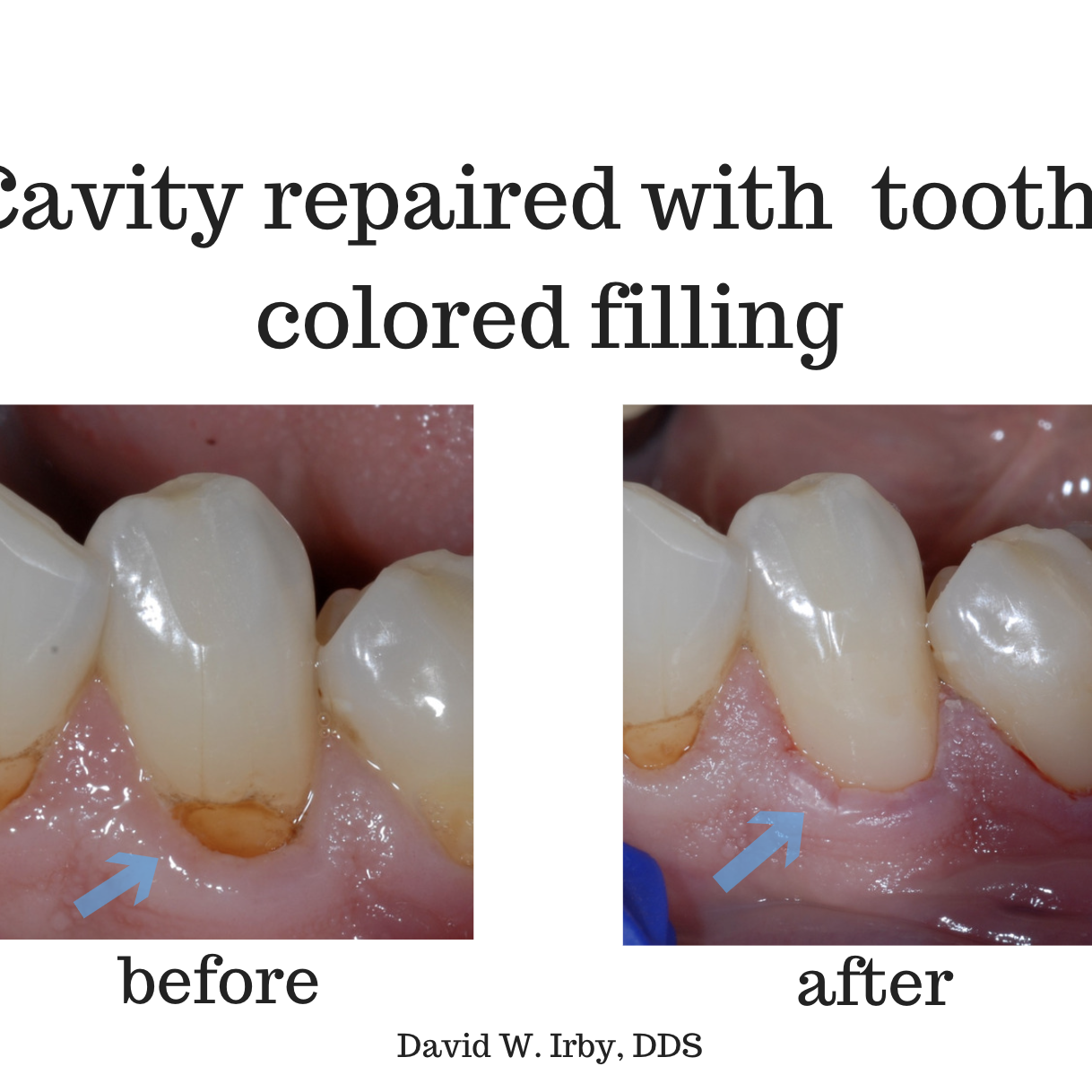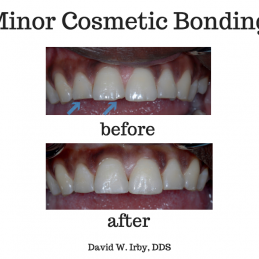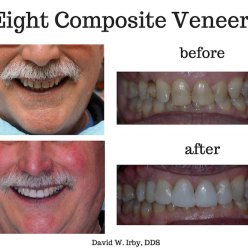The first example below shows a tooth with a cavity (before) that is repaired with a tooth-colored filling (after). This cavity is caused by bacteria which invaded the exposed tooth’s root surface near the gum tissue. Teeth which have some gum recession are more susceptible to cavities in this area. Note how natural the restored tooth appears. This restoration will last many years if proper oral hygiene is maintained.
DENTAL FILLINGS AND BONDING
Business
REVIEWS
TECHNOLOGY
Tooth Colored Fillings and Dental Bonding Roanoke, Virginia
Today’s modern composite resins come in a variety of shades to make fillings and bondings blend seamlessly with the natural tooth. Patients may need tooth colored fillings to restore a decayed tooth, repair a chipped tooth or even make cosmetic improvements in their appearance.
Dental Bonding Example #1: A tooth-colored filling
Dental Bonding Example #2: Minor cosmetic repairs
The second example below demonstrates the ability to correct minor tooth chipping using dental bonding. Dentists also repair larger fractures with bonding, though it is less predictable long-term. Bonding in this example is a quick, comfortable procedure. No anesthesia (numbing) is necessary. The bonded area matches the shade of the tooth and is polished to blend seamlessly.
Dental Bonding Example #3: Cosmetic veneers
This final example demonstrates the ability to alter shade, rotation, and shape of several teeth using bonded composite veneers. See our veneers page for more information.
Photo Gallery
Get in Touch!
Frequently Asked Questions
How much should dental bonding cost?
Dental bonding may cost $150-800 per tooth.
Do dentists recommend bonding?
Bonding refers to restoring a tooth with composite filling material. Your dentist may recommend bonding to repair a cavity or a chipped or fractured tooth.








